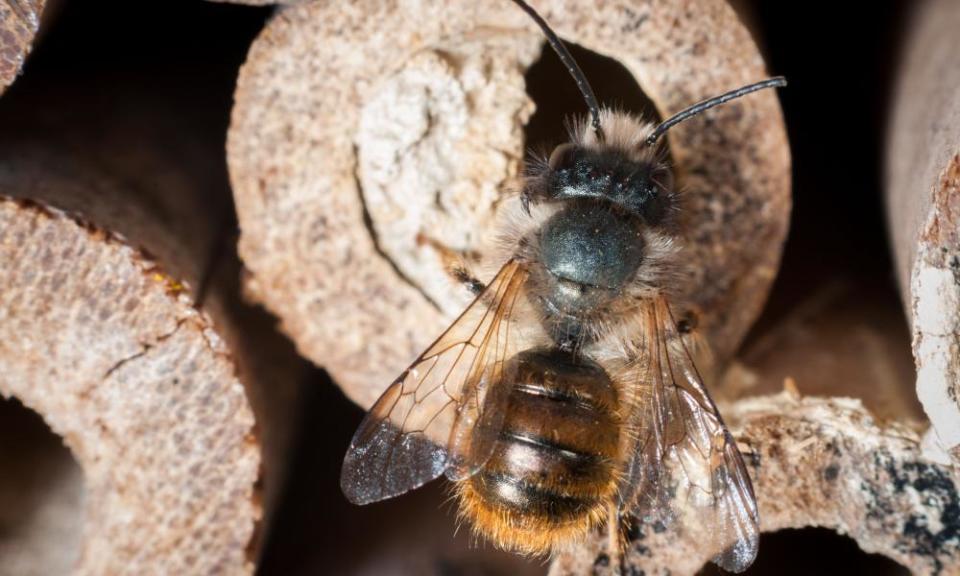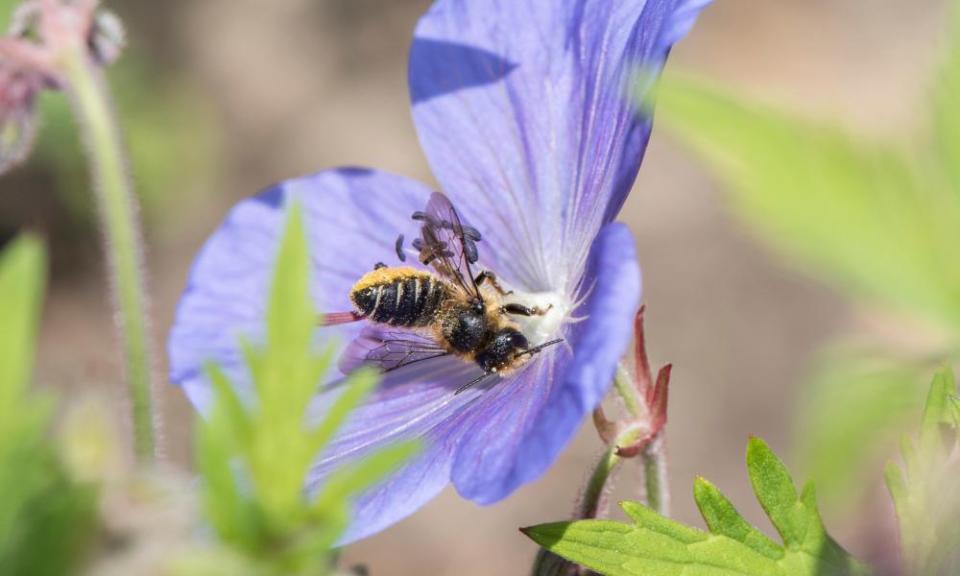Country diary: the mason bee builds individual rooms for her eggs

A few weeks ago, my neighbours had cavity wall insulation installed and the resulting drill holes in their gable-end wall were soon being prospected by red mason bees (Osmia bicornis).
People often assume that the common name of these gingery, spring-flying solitary bees refers to a tendency to nest in crumbling mortar, but it’s more likely to derive from their habit of using mud as a mortar-like material to line and partition their brood cells. While females do make use of crevices between old brickwork, they also nest in hollow plant stems and beetle boreholes in dead wood, and will readily occupy manmade bee hotels.
Solitary bees seek out nesting sites in full sun, so as to maximise the chances of an artificial bee box being occupied, position is crucial. I hung one halfway up my south-facing garden wall and within an hour a female had begun scouting out the accommodation. Having selected a suitable bamboo cane, she flew off, returning with a globule of sticky mud in her jaws and disappearing into the far reaches of the hollow.
When she arrived back at the nest after her next flight, her undercarriage was glowing gold. Unlike honey bees and bumblebees, which transport pollen in baskets on their hind legs, mason bees collect the grains on their scopa, a pad of densely packed specialised hairs on the underside of the abdomen.
The bee entered the nest head-first to regurgitate nectar, backed out, spun round and reversed back in to brush off the pollen. This was the first of many foraging trips, the process repeated until she had deposited a pollen ball large enough to sustain a single larva.

Adequate provisions provided, she laid an egg, capped the cell and set to work on the next chamber, breaking briefly to engage in an aerial tussle with an interloping female who, having taken possession of an adjacent cane, hovered too close to her neighbour’s entrance hole.
The industrious little insect worked tirelessly until sundown, roosting overnight in the mouth of the tunnel. By late afternoon the following day, she had finished filling the tube and was sealing in her future progeny. Using her inward-curved facial horns, she tamped down mouthfuls of mud, smoothing it as it set to form a thick, protective plug.

